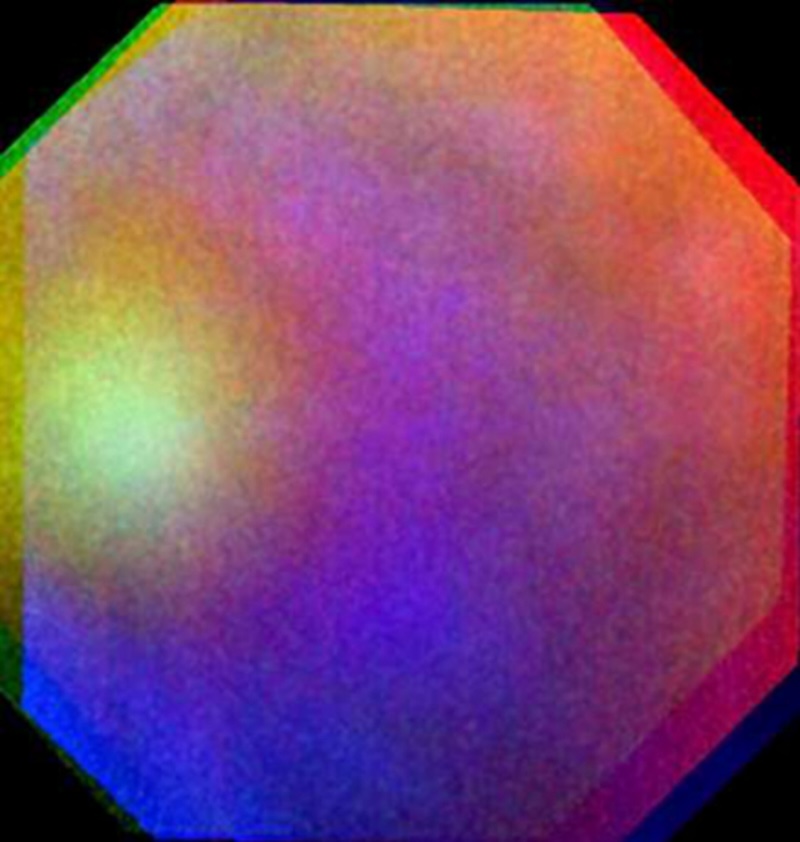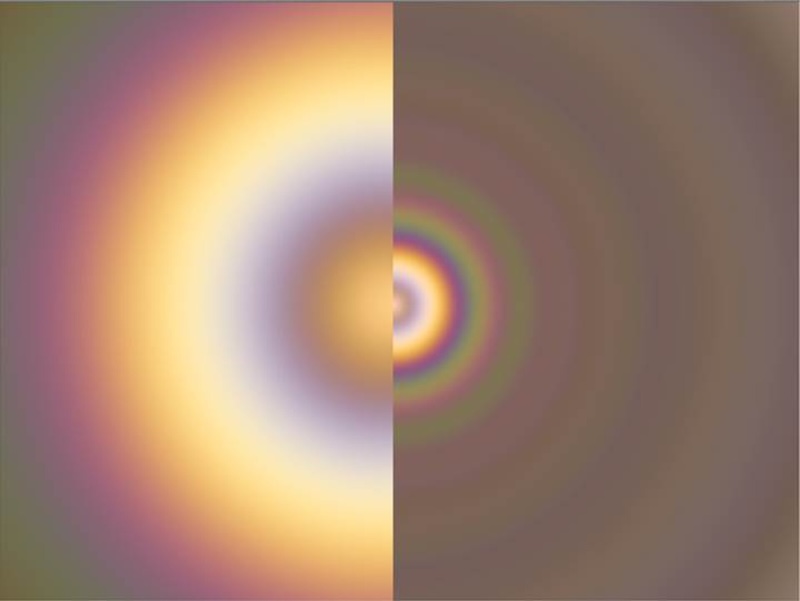- Astronomers have detected what appears to be a glory – the same optical phenomenon you sometimes see out the window of an airplane – on on exoplanet, or planet orbiting a distant star.
- Glories are common on Earth, and spacecraft have seen them on Venus. But, if confirmed, this will be the first time astronomers have seen a glory outside of our solar system.
- Glories are a natural circular rainbow-like phenomenon that only occur in certain atmospheric conditions.
Have you ever seen a glory? Glories are colorful, concentric rings of light that form only under certain conditions. You can often see them while looking out an airplane window. They’re fairly common to see on Earth. And astronomers have also seen glories on Venus. But on April 5, 2024, scientists said they’ve detected the first-ever glory outside our solar system, on an exoplanet – or planet orbiting another star – some 637 light-years away. The exoplanet is called WASP-76b, and it’s an ultra-hot gas giant.
They said they spotted the glory using data from two different space observatories: ESA’s CHaracterising ExOPlanet Satellite (Cheops) and NASA’s Transiting Exoplanet Survey Satellite (TESS).
The researchers published their peer-reviewed findings in the journal Astronomy & Astrophysics on April 5, 2024.
Join our community of passionate astronomy enthusiasts and help us continue to bring you the latest astronomy news and insights. Your donation makes it all possible.
1st glory on an exoplanet?
If this is really a glory – still to be fully confirmed – it will be the first one ever seen outside of our solar system. Olivier Demangeon is an astronomer at the Institute of Astrophysics and Space Sciences in Portugal, and lead author of the new study. He said:
There’s a reason no glory has been seen before outside our solar system; it requires very peculiar conditions. First, you need atmospheric particles that are close-to-perfectly spherical, completely uniform and stable enough to be observed over a long time. The planet’s nearby star needs to shine directly at it, with the observer – here Cheops – at just the right orientation.
The glory appears to be located between the day side and night side of the planet. Similar to glories seen here, it likely occurs when sunlight is reflected off clouds made of a uniform substance. What that substance is on WASP-76b, however, is still unknown.
Hints of the glory phenomenon
So, how did the astronomers detect the glory? The first hints came from observation of the planet as it transited – passed in front of – its star as seen from Earth. The limbs of the planet – the outermost edges – looked “wonky.” The researchers made 23 observations of WASP-76b over three years. During that time, they noticed something unusual. They saw more than the expected amount of light coming from the planet’s eastern terminator, where the day side meets the night side. What might explain the change in brightness?
The researchers said that a glory can explain the odd observations. Demangeon said:
This is the first time that such a sharp change has been detected in the brightness of an exoplanet, its “phase curve.” This discovery leads us to hypothesise that this unexpected glow could be caused by a strong, localised and anisotropic (directionally dependent) reflection … the glory effect.

A hellish world
WASP-76b is a gas giant planet, like Jupiter and Saturn, 637 light-years from Earth. It is, in fact, almost twice the twice the size of Jupiter. But about 10% less massive, however. In our solar system, the giant planets all orbit far away from the sun. But WASP-76b is what astronomers call a hot Jupiter. It orbits its sun-like star 12 times closer than Mercury orbits our sun. No wonder it’s so hot!
It is tidally locked to its star, so one side is always in daylight while the other is in darkness. It is so hot, up to 2,400 degrees Celsius (4,300 degrees F) on the dayside, that scientists say it probably rains molten iron. Rocks on the day side would melt. They then evaporate and condense back on the night side. This could create clouds composed of iron particles that would then drip molten iron rain.
Co-author Matthew Standing at ESA said:
What’s important to keep in mind is the incredible scale of what we’re witnessing.
WASP-76b is several hundred light-years away, an intensely hot gas giant planet where it likely rains molten iron. Despite the chaos, it looks like we’ve detected the potential signs of a glory. It’s an incredibly faint signal.

The science of a glory on an exoplanet
Why is finding a glory on an exoplanet significant? First, it’s already a relatively rare phenomenon in our own solar system overall. So finding glories on exoplanets shows that they can happen elsewhere, too. It also provides clues about WASP-76s’s atmosphere. It means there must be clouds made of perfectly spherical droplets. The observations so far show that they either can last more than three years or the clouds are being constantly replenished. That in turn requires temperatures to be stable over long periods of time.
In addition, being able to detect glories will help astronomers see other faint phenomena including glints of sunlight on oceans or lakes on exoplanets.
There is also just the intrigue and satisfaction of finding something new and unique. Demangeon explained:
I was involved in the first detection of asymmetrical light coming from this weird planet, and ever since I have been so curious about the cause. It has taken some time to get here, with moments where I asked myself, “Why are you insisting on this? It might be better to do something else with your time.” But when this feature appeared out of the data, it was such a special feeling, a particular satisfaction that doesn’t happen every day.

More observations needed to confirm
Additional observations are needed to know for sure that this is a glory, as Theresa Lüftinger, Project Scientist for ESA’s upcoming Ariel mission, which will study the chemical makeup of exoplanets, noted:
Further proof is needed to say conclusively that this intriguing ‘extra light’ is a rare glory. Follow-up observations from the NIRSPEC instrument onboard the NASA/ESA/CSA James Webb Space Telescope could do just the job. Or ESA’s upcoming Ariel mission could prove its presence. We could even find more gloriously revealing colors shining from other exoplanets.
Bottom line: For the 1st time, astronomers say they have detected a glory on an exoplanet. Glories are a natural phenomenon, but until now seen only on Earth and Venus.
Source: Asymmetry in the atmosphere of the ultra-hot Jupiter WASP-76 b
Via ESA
Read more: Perfect airplane glory
Read more: Space rainbow: Glory seen in Venus atmosphere